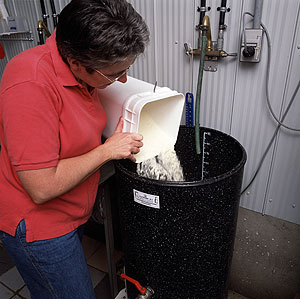Healthy Calf Conference
Follow to stay up-to-date on all Healthy Calf Conference updates. Speaker announcements, sponsorship information, registration announcements, and more.

The most important part of mixing milk replacer is weighing the powder because milk replacer is hygroscopic, which means it absorbs moisture from the environment around it. Therefore, a scoop of milk replacer in the summer is not the same weight as milk replacer in the winter.
Read the label carefully and follow its instructions. Consider how you are adding the powder. If you start with one litre of water and add the powder, your total volume will be a bit higher than a litre. If you start with less than one litre of water and add the powder, you will end up with one litre exactly. This is more accurate if you are trying to ensure an exact amount of feed for each calf.
The type of milk replacer you’re using determines how you will mix it. Products containing more vegetable protein are harder to put into suspension, so you may need a mechanic mixer. A paint mixer on the end of a drill works very well. Some products go into suspension very easily and a good whisking is all that is needed to put the powder into suspension.
Your final feeding temperature should be the body temperature 38°C. You may want to compensate for cold weather and cold feeding equipment in the winter by making the solution a bit warmer (approximately 40°C).
Your milk replacer should be a nice homogenous solution when you are done. You should never have chunks of un–dissolved milk replacer floating in the mixture or any particles left over on the bottom of the pail.
Follow to stay up-to-date on all Healthy Calf Conference updates. Speaker announcements, sponsorship information, registration announcements, and more.
The Codes of Practice are nationally developed guidelines for the care and handling of farm animals. They serve as our national understanding of animal care requirements and recommended practices.